National Museum of Civilizations after the Parade
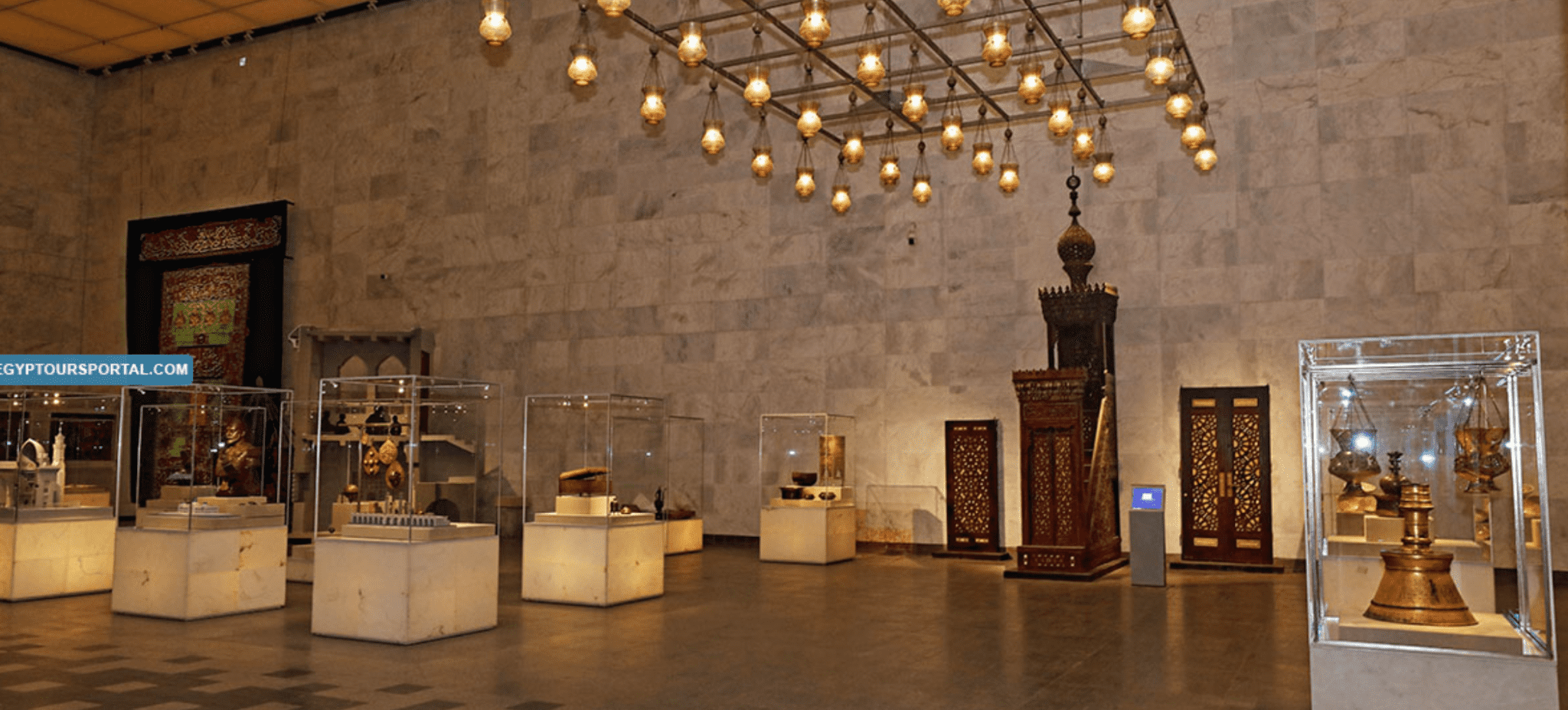
Updated On: February 01, 2024 by Dina Essawy
Egyptian history and civilization have always held an important place in the history of the world and that is why the people of Egypt always take pride in their history and their ancestors. In this context, a new grand museum has been constructed in Cairo to house many of the antiquities that have long been stored in warehouses or crowded with other similar objects so viewers were unable to fully enjoy them. The new National Museum of Civilizations opened in April 2021 with a grand inauguration ceremony that witnessed the transfer of twenty-two royal mummies from the Egyptian Museum in Tahrir to the National Museum of Egyptian Civilization in Fustat.
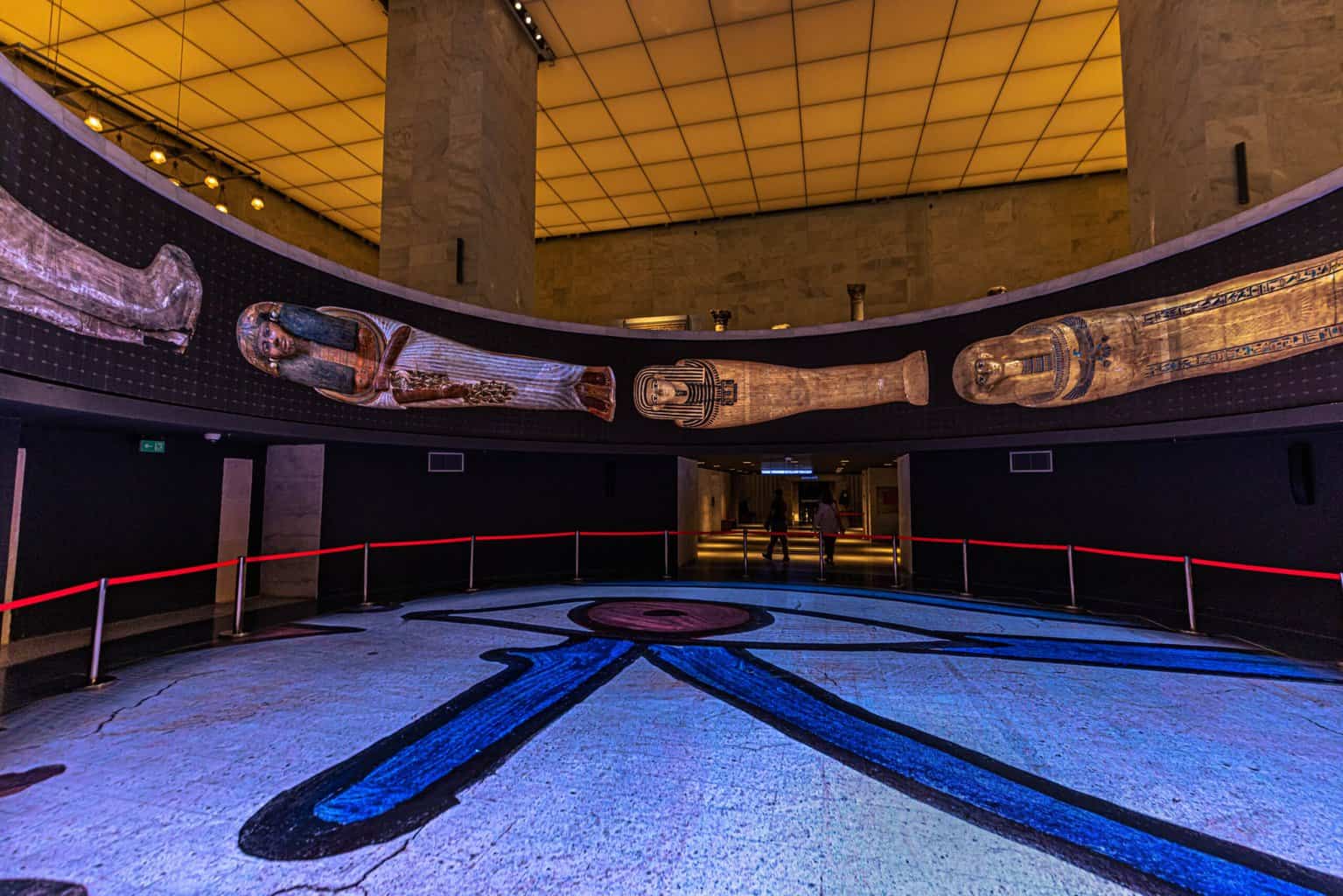
Table of Contents
The Golden Royal Mummies Parade to the National Museum of Civilizations
On April 3rd, 2021, twenty-two royal mummies (18 kings and 4 queens) were transported from the Egyptian Museum in Tahrir to the National Museum of Egyptian Civilization in Fustat in a grand celebration that was witnessed by the entire world, to honor these great historical figures that had a huge impact on Egyptian history.
The elaborate event began with a quick tour of the new museum, then short videos were displayed explaining the many renovations of historical sites that took place in the last few years, including the restoration of the Djoser Step Pyramid, the Eliyahu Hanavi Synagogue, the groundwater lowering project at Kom el-Shoqafa that was completely submerged underwater, the Hanging Church (Saint Virgin Mary Church), the Abu Serga Church, the Al-Azhar Mosque, the Museum of Islamic Arts, the Al-Fath Mosque, the Royal Vehicles Museum, Baron Empain Palace, Tahrir Square, Sphinxes Avenue in Luxor, and new constructions and renovations, such as the Sharm El-Sheikh Museum, Hurghada Museum, the Giza Pyramids Plateau, the Grand Egyptian Museum, Egypt’s Capitals Museum and finally the National Museum of Egyptian Civilization, as well as magnificent archaeological discoveries, such as that of the Wahty Tomb discovery.
The celebration continued with a song from one of the top Egyptian singers about Egypt, while featuring amazing live scenes from the Nile, as golden sun boats, similar to those used by ancient Egyptians, floated along in the background.
A live orchestra proceeded to play a symphony composed specifically for this occasion, focusing on musical instruments used by ancient Egyptians, as famous Egyptian actors and actresses spoke from different historical landmarks from all over Egypt, such as the Pyramids in Giza, Hatshepsut Temple in Luxor, Grand Egyptian Museum in Giza, Djoser Step Pyramid, and the Egyptian Museum.
Then, the event truly began as volunteers dressed in ancient Egyptian costumes, stepped out from the Egyptian Museum, while the Tahrir Square, next to the museum, lit up in preparation for the royal parade. The United Philharmonic Orchestra played as the volunteers walked out in specific formations, some walking, and some riding chariots. Then, the carriages specifically designed to transport the royal mummies exited the Egyptian museum, heading for the National Museum of Egyptian Civilization in Fustat, as Egyptian singers and sopranos chanted and sang in the ancient Egyptian language, inspired by texts from the Book of the Dead. All the while, scenes of dancers decked out in ancient Egyptian costumes appeared from all over Egypt, at different famous historical locations, including the Pyramids, the Grand Egyptian Museum, Djoser Step Pyramid, and the Hatshepsut Temple.
The royal mummies finally arrived at their new destination and were saluted with a 21-canon salute in respect to their royal status and were finally received by the President of Egypt.
The event captured the attention of the world and many praised its immaculate organization and attention to detail. It truly managed to transport us back in time to ancient Egypt and perfectly displayed what a unique and magnificent civilization it was.
It was also a perfect way to inaugurate the National Museum of Egyptian Civilization which is now open to the public. The mummies will be put on display again at their new home starting 18 April 2021.
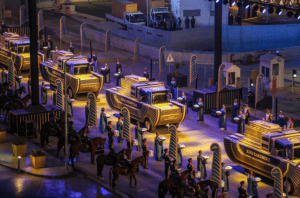
The Royal Mummies Golden Parade through the Streets of Cairo
The royal mummies were transported in chronological order, according to their reign, as follows: King Seqenenre Tao (a skilled diplomat and military leader who led the liberation wars against the Hyksos), Queen Ahmose-Nefertari (a powerful Queen and regent who was divinized long after her death), King Amenhotep I (assumed the throne as a child and ruled for 20 years), Queen Meritamun (daughter of Ramses II and Nefertari), King Thutmose I (a skilled warrior who stretched the borders of Egypt towards the South), King Thutmose II (led two military conquests under the guidance of his wife Hatshepsut), Queen Hatshepsut (built the famous temple in Deir El Bahari in Luxor and expanded trade between Egypt and the Land of Punt), King Thutmose III (one of the most important rulers of Egypt and a skilled military general who led numerous battles), King Amenhotep II (led many construction projects such as the expansion of the Karnak Temple), King Thutmose IV (famously had a dream of the Sphinx who asked him to remove the sand surrounding his statue and he would be rewarded with the throne of Egypt and the vision came true), King Amenhotep III (known for maintaining the peace and prosperity of the country throughout his reign), Queen Tiye (wife of King Amenhotep III and mother of Akhenaten one of the most renowned Kings of Egypt who unified all the gods), King Seti I (his tomb is carved into a mountain and is considered one of the most beautiful tombs in the Valley of the Kings), and King Ramses II (a renowned ruler who reigned over Egypt for 67 years, conducted the first peace treaty in human history and built the famous temple of Abu Simbel).
The parade also included the mummies of King Merenptah (son of Ramses II and ascended to the throne after the death of his older siblings), King Seti II (expanded the copper mines and established a riverboat terminal), King Siptah (ascended to the throne as a child after the death of Seti I), King Ramses III (managed to protect Egypt from the conquests of the Sea Peoples and built the Temple of Habu, west of Luxor, one of the most beautiful temples to date), King Ramses IV (his reign is characterized by massive constructions and he increased the number of artisans working in Deir El Madina to 120 men and he also sent missions to explore the Wadi El Hamamat mines and the turquoise mines in Sinai), King Ramses V (order the expansion of his father Ramses IV’s funerary temple and died young), King Ramses VI (although he had a short reign, he managed to scale down the number of workers in the Deir El Madina, and decided that he would be buried in the tomb of Ramses V, and he also completed the constructions started by his predecessors), and King Ramses IX (added many constructions to the city of Heliopolis).
A similar parade will be reportedly be held to move the treasures of Tutankhamen from the Egyptian Museum to the new Grand Egyptian Museum in Giza, located next to the Pyramids of Giza, hailed as one of the biggest cultural projects of the 21st century.
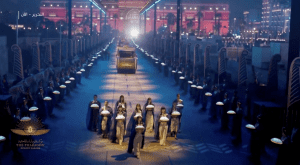
The National Museum of Civilizations in Egypt
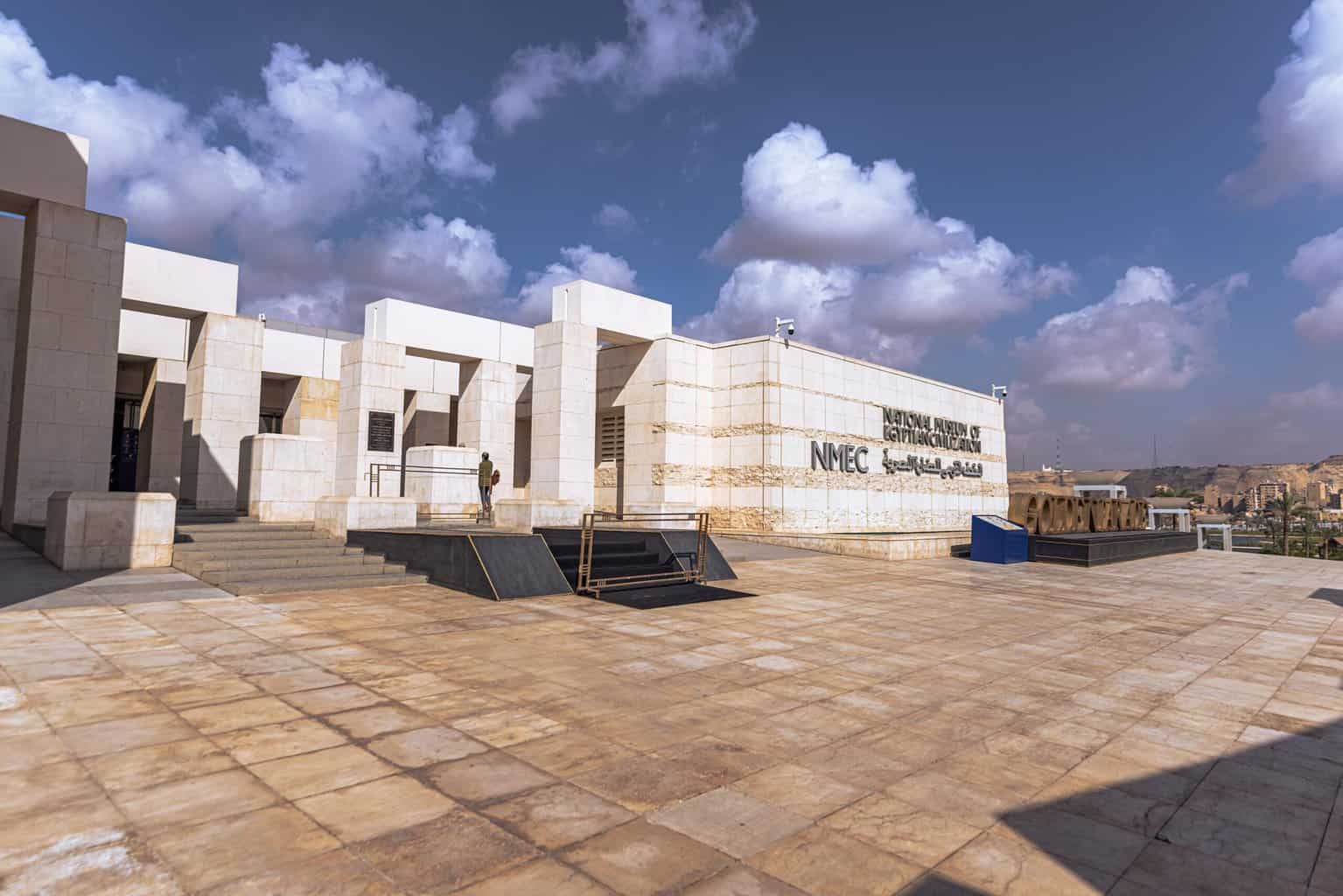
The National Museum of Egyptian Civilization (NMEC) is built over 490,000 square meters in Fustat, the old capital of Egypt, and it was designed by an Egyptian architect. The museum displays a collection of 50,000 artifacts, focusing on Egyptian civilization from prehistoric times to this day.
The museum is surrounded by Ain El Sira Lake which was renovated for the inauguration and cafes and restaurants are now open to receive visitors of the museum.
The museum is divided into grand halls, the Main Hall which displays Egyptian heritage from prehistoric times to Pharaonic, Greco-Roman, Coptic, Islamic eras to modern-day.
The Museum’s collections will be displayed through six thematic galleries as follows: the Dawn of Civilization, The Nile, Writing, State and Society, Material Culture, Beliefs and Thinking, and finally the Gallery of the Royal Mummies.
The Museum will also host a temporary exhibition, and it includes an auditorium and an education and research center for hosting screenings, conferences, lectures, and cultural activities, and an exhibition detailing the development of the city of Cairo.
Then there is the Mummies Hall, which will display the royal mummies of the ancient Kings and Queens of Egypt. The design of the Hall aims to make you feel as though you’re strolling down the Valley of the Kings in Luxor, where most of these mummies were found.
Many of the collections to be displayed in the museum were brought in from the Egyptian Museum, the Museum of Islamic Art, the Coptic Museum, the Manial Palace Museum in Cairo, and the Royal Jewelry Museum in Alexandria.
Opening Hours and Tickets
The museum is open from Saturday to Thursday, from 9:00 am to 5:00 pm, and on Fridays, it opens from 9:00 am to 5:00 pm and from 6:00 pm to 9:00 pm.
Tickets for Egyptians and Arabs are EGP 60 and EGP 30 for students. Tickets for foreigners are EGP 200 and EGP 100 for students.






